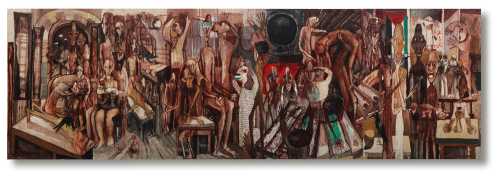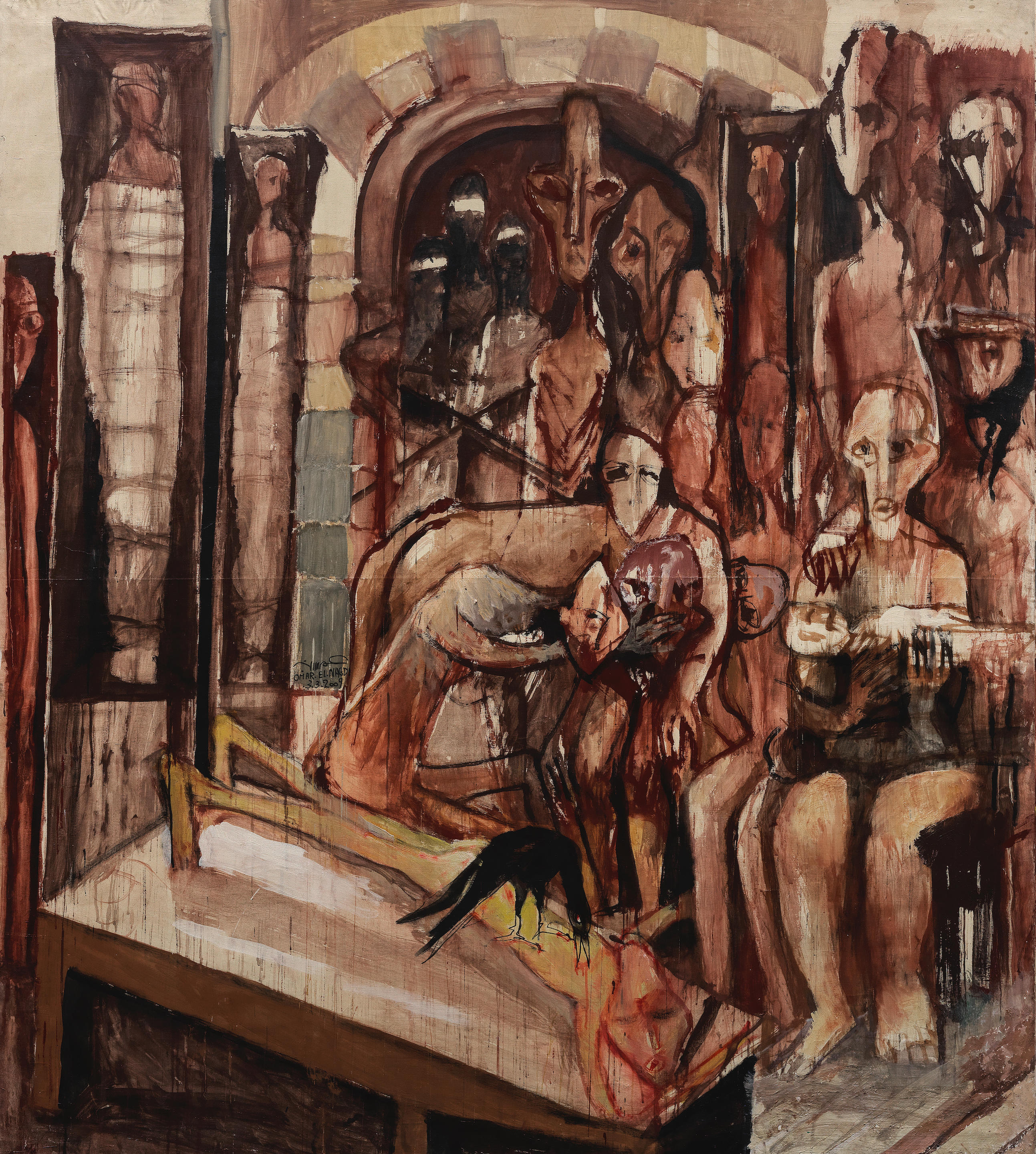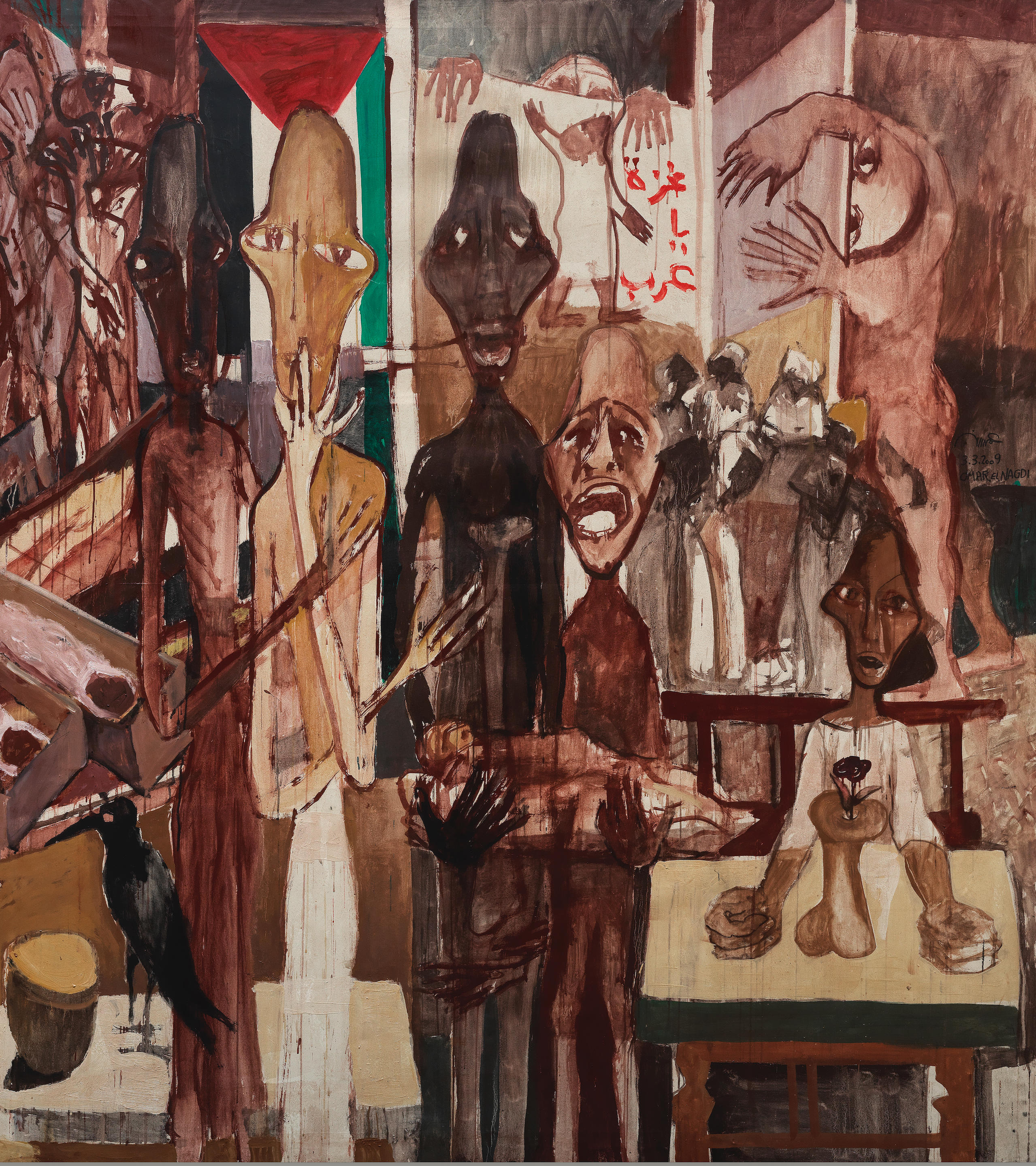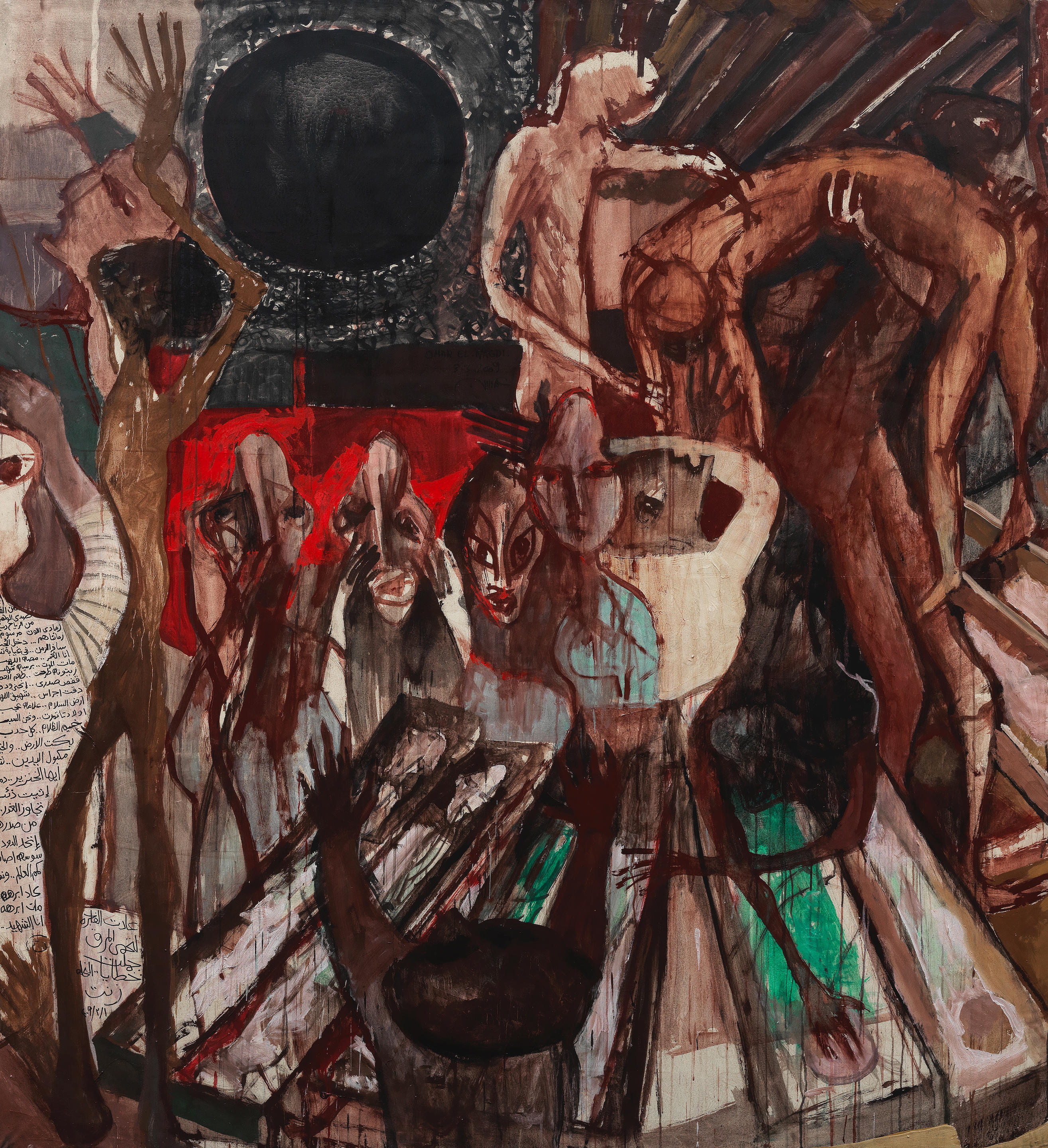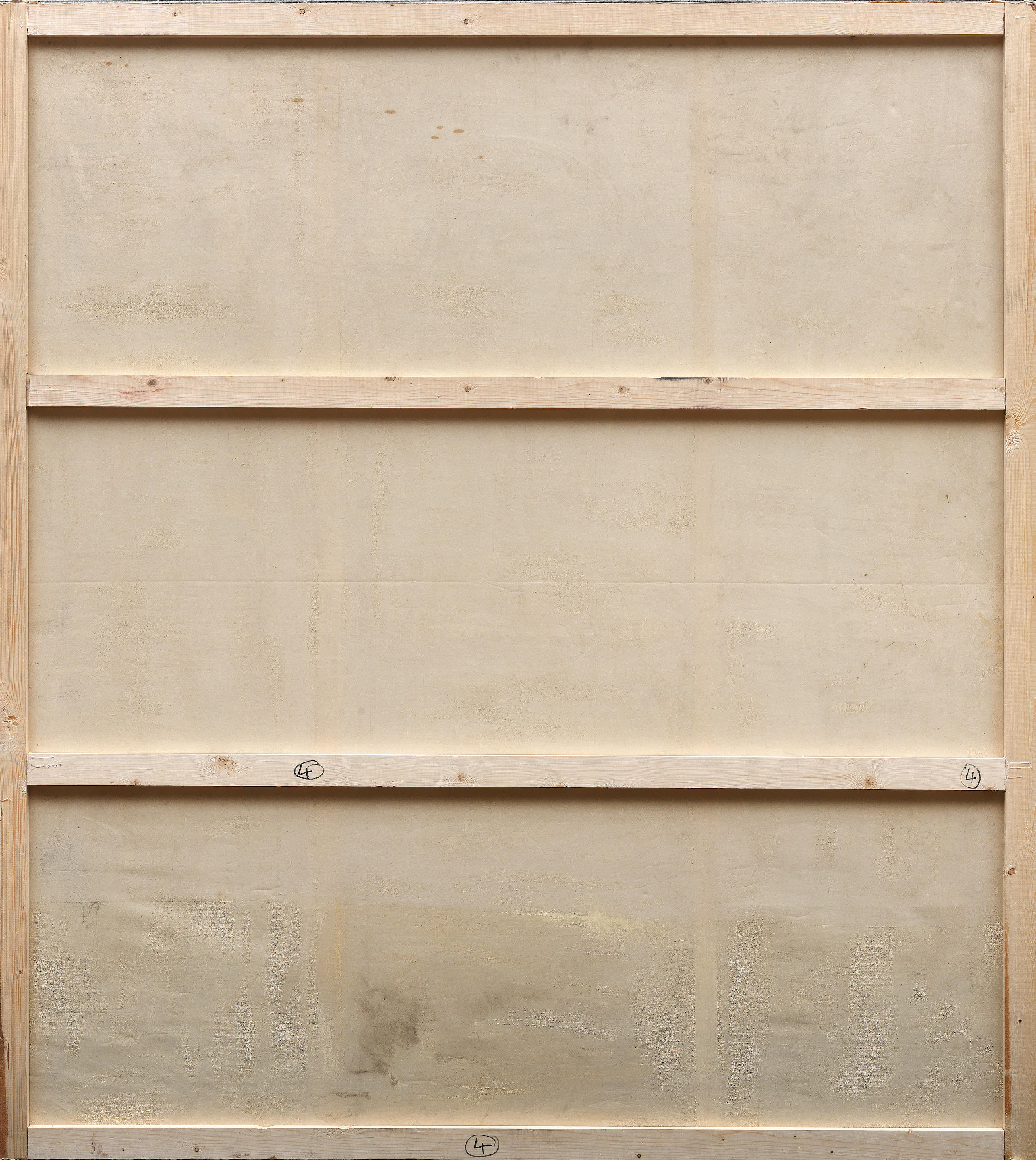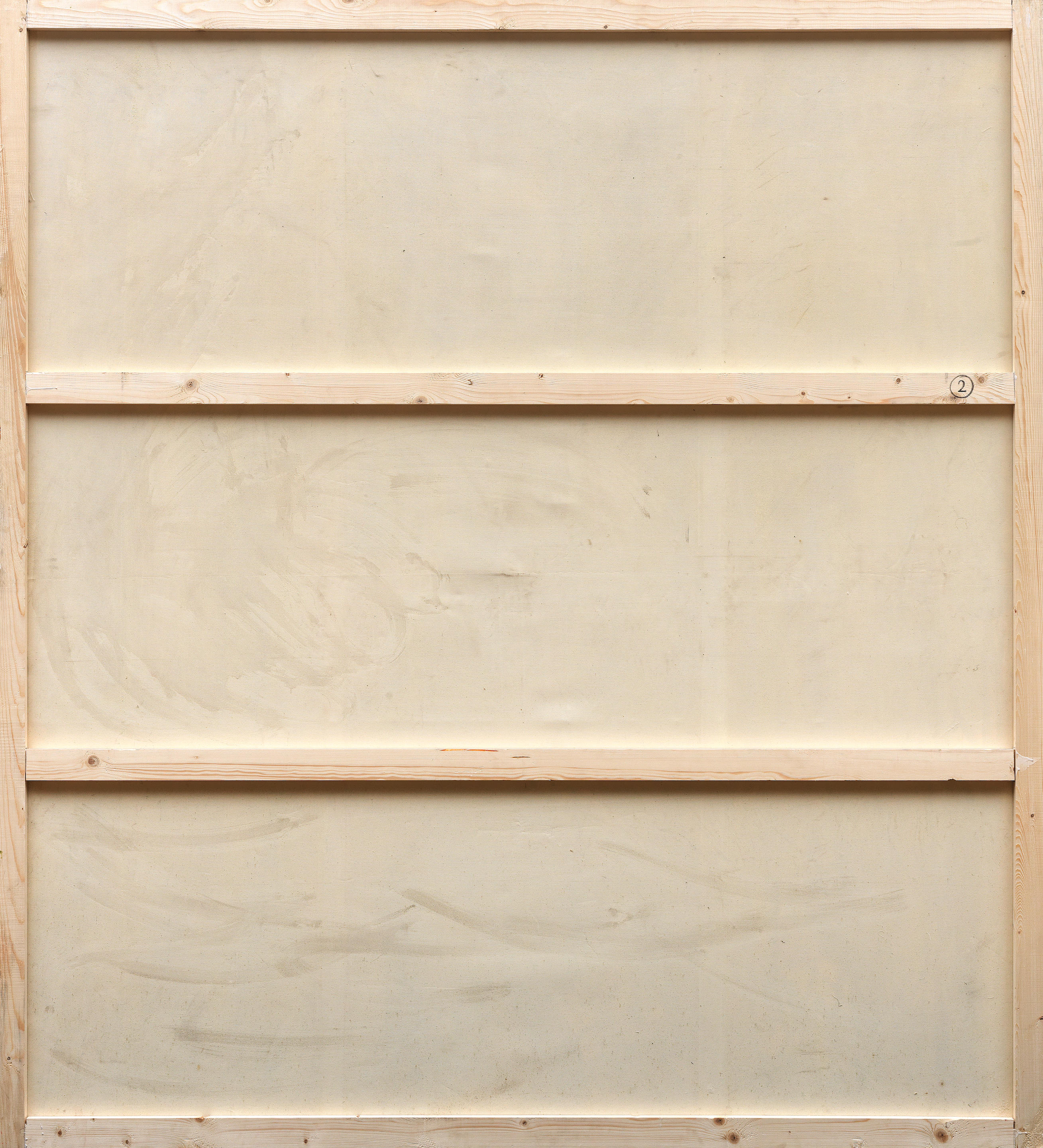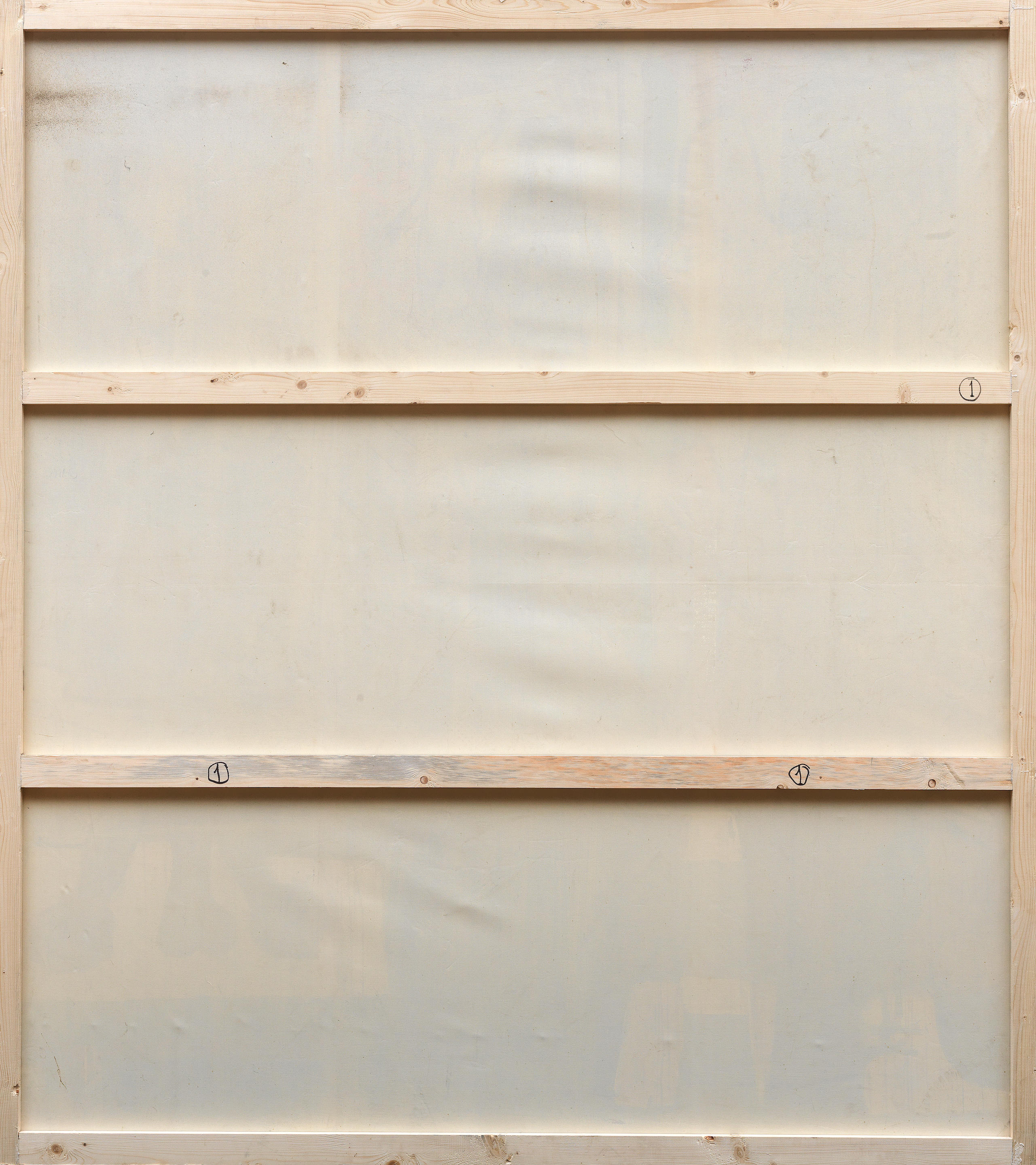- Gaza 2009
- Oil on canvas
- Painting
- 900 * 250 cm
- signed and dated
250 x 225 cm per panel
Estimation
£250,000
313,558 USD
-
£450,000
564,405 USD
Unsold
Artwork Description
This monumental and highly significant painting captures the unimaginable hardship, fear and anguish of the Palestinian civilians during the Gaza War which was also better known in the Muslim world as the Gaza Massacre. This three-week armed conflict between The Israeli Defence Forces and the Gaza Strip Palestinian paramilitary groups began on the 27th of December 2008 and ended on the 18th of January 2009 with a unilateral ceasefire. The unrelenting attack on Gaza resulted in over a thousand Palestinian and thirteen Israeli deaths.
Omar El-Nagdi found the persecution and the brutal assault on his Palestinian brothers and sisters deeply unsettling and distressing. The ongoing massacres by the Israelis, deeply affected the Egyptian artist and urged him to react to these monstrosities by impulsively expressing himself in this profound composition. Suffering has been an enduring theme in art for centuries, and the tradition of painting violence, pain and oppression has long been a source of expression for artists experiencing conflict.
The artist communicates a deep and painful reality; this painting serves as a reminder and reflections of Palestinian history and the ongoing struggle. The historic moment of the 1948 Palestinian exodus also known as the Nakba in Arabic led to the displacement of hundreds of thousands of children and the ongoing war left many casualties.
Towering and striking, the present work was painted two months after the conflict ended in 2009 and is one of the finest examples of the artist reacting almost concurrently to the world around him. A seminal piece of artistic activism, in the vein of some of the greatest recorded works in history like Picasso's "Guernica" and Goya's "Disasters of War". In his treatment of conflict, Nagdi clearly recalls Goya, whose set of 82 etchings were inspired by the scarring effect of the Franco-Spanish Peninsular War of 1807.
Whilst divergent in form and composition, what Nagdi absorbs from Goya is the jarred, fragmented aesthetic that reflects the tumult of wartime discord. Goya was said to capture scenes in "agonised haste", and accordingly, the idea of the turbulence of conflict depicted with a ghoulish, monster like aesthetic is heavily incorporated in Nagdi's work. El-Nagdi transcribes literally the chaos of war, isolating each disproportioned figure onto the canvas yet bringing them all together through the agony expressed in their faces.
Hopelessness, grief and despair are apparent in the body language of the men, women and children seen in this work. His figures, or rather creatures, appear inhuman and resemble fictional characters rather than people, showing how the sufferings and torturing of war has stripped them bare of their humanity and dignity. Each movement, each body part and each facial expression screams out from the canvas; the hands reaching out in despair and the frightened bulging eyes of the helpless victims.
Omar El Nagdi was born in Cairo in 1931 and studied at the Faculty of Fine Arts of Helwan University. Nagdi continued his training in Russia and Italy, eventually graduating from the Academy of Venice in 1967. A prodigious pioneer in Egyptian art history, In the 1960s, Nagdi exhibited in Europe alongside the Western masters Claude Monet, Pablo Picasso and Salvador Dali. His works were soon after acquired by leading institutions around the world. An active member of Cairo's art community and of the Liberal Artists' group headed by Taha Hussein, Nagdi was an extraordinary painter and who equally excelled as a film director and music composer.
A multi-disciplinary artist, Nagdi worked with sculpture, oil, watercolour and mosaics. Inspired by the diverse cultures that he encountered in rural Egypt, he fused in his works the Pharaonic and Islamic iconography with Cairo's urban culture idioms and Western aesthetics. His works visually enigmatic and captivating and inspired by folk art and traditions are reflections on everyday life in Egypt. His paintings are sufficient proof of his exceptional gifts for symbolic design and the splendid use of colour. Through his expressive textures, colours and symbolic elements, his works offer a communication that is deeply felt.
Omar El-Nagdi found the persecution and the brutal assault on his Palestinian brothers and sisters deeply unsettling and distressing. The ongoing massacres by the Israelis, deeply affected the Egyptian artist and urged him to react to these monstrosities by impulsively expressing himself in this profound composition. Suffering has been an enduring theme in art for centuries, and the tradition of painting violence, pain and oppression has long been a source of expression for artists experiencing conflict.
The artist communicates a deep and painful reality; this painting serves as a reminder and reflections of Palestinian history and the ongoing struggle. The historic moment of the 1948 Palestinian exodus also known as the Nakba in Arabic led to the displacement of hundreds of thousands of children and the ongoing war left many casualties.
Towering and striking, the present work was painted two months after the conflict ended in 2009 and is one of the finest examples of the artist reacting almost concurrently to the world around him. A seminal piece of artistic activism, in the vein of some of the greatest recorded works in history like Picasso's "Guernica" and Goya's "Disasters of War". In his treatment of conflict, Nagdi clearly recalls Goya, whose set of 82 etchings were inspired by the scarring effect of the Franco-Spanish Peninsular War of 1807.
Whilst divergent in form and composition, what Nagdi absorbs from Goya is the jarred, fragmented aesthetic that reflects the tumult of wartime discord. Goya was said to capture scenes in "agonised haste", and accordingly, the idea of the turbulence of conflict depicted with a ghoulish, monster like aesthetic is heavily incorporated in Nagdi's work. El-Nagdi transcribes literally the chaos of war, isolating each disproportioned figure onto the canvas yet bringing them all together through the agony expressed in their faces.
Hopelessness, grief and despair are apparent in the body language of the men, women and children seen in this work. His figures, or rather creatures, appear inhuman and resemble fictional characters rather than people, showing how the sufferings and torturing of war has stripped them bare of their humanity and dignity. Each movement, each body part and each facial expression screams out from the canvas; the hands reaching out in despair and the frightened bulging eyes of the helpless victims.
Omar El Nagdi was born in Cairo in 1931 and studied at the Faculty of Fine Arts of Helwan University. Nagdi continued his training in Russia and Italy, eventually graduating from the Academy of Venice in 1967. A prodigious pioneer in Egyptian art history, In the 1960s, Nagdi exhibited in Europe alongside the Western masters Claude Monet, Pablo Picasso and Salvador Dali. His works were soon after acquired by leading institutions around the world. An active member of Cairo's art community and of the Liberal Artists' group headed by Taha Hussein, Nagdi was an extraordinary painter and who equally excelled as a film director and music composer.
A multi-disciplinary artist, Nagdi worked with sculpture, oil, watercolour and mosaics. Inspired by the diverse cultures that he encountered in rural Egypt, he fused in his works the Pharaonic and Islamic iconography with Cairo's urban culture idioms and Western aesthetics. His works visually enigmatic and captivating and inspired by folk art and traditions are reflections on everyday life in Egypt. His paintings are sufficient proof of his exceptional gifts for symbolic design and the splendid use of colour. Through his expressive textures, colours and symbolic elements, his works offer a communication that is deeply felt.
More lots by Omar El-Nagdi
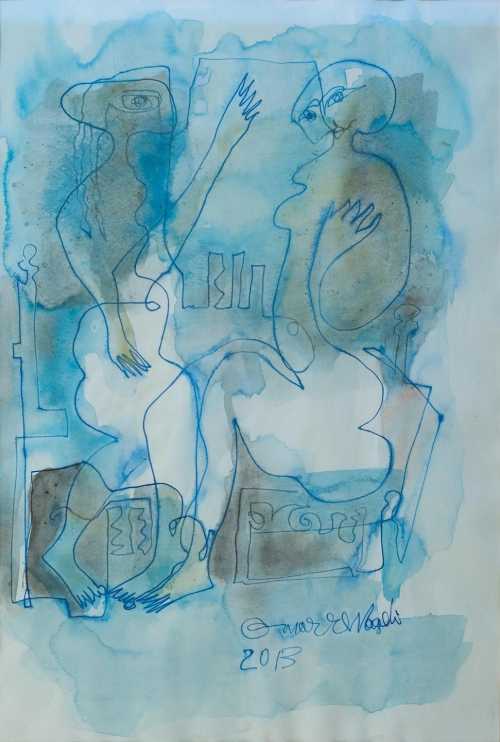
Two Figures in Blue
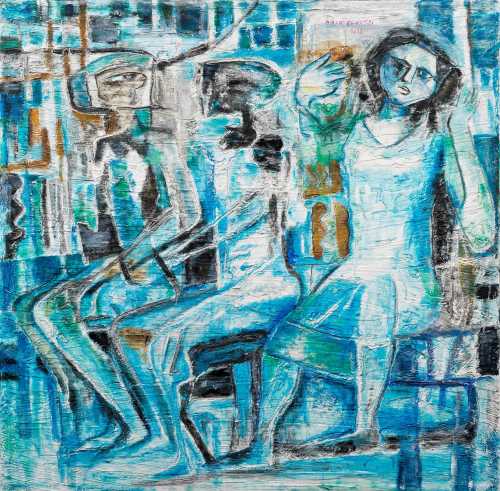
Untitled (Bleue)
Estimation
£12,000
16,540 USD
-
£20,000
27,567 USD
Realized Price
£15,250
21,020 USD
4.688%
Sale Date
Bonhams
-
17 November 2021
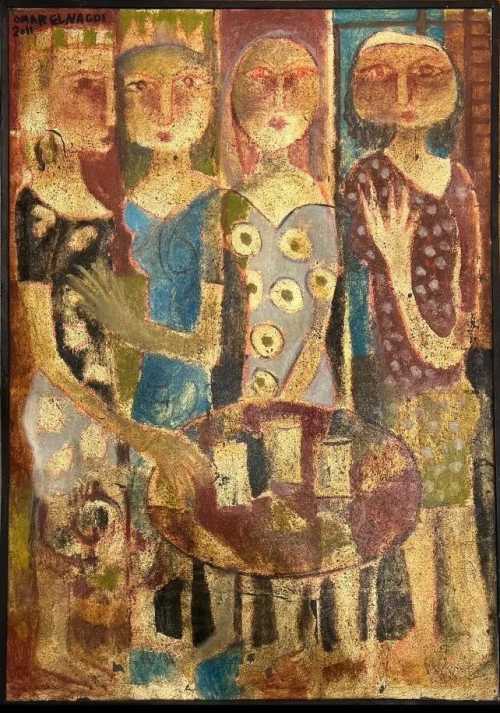
Girls Around the Table
Estimation
£20,000
25,227 USD
-
£30,000
37,841 USD
Realized Price
£30,720
38,749 USD
22.88%
Sell at
Sale Date
Bonhams
-
13 February 2024
Realized Price
66,622 USD
Min Estimate
32,108 USD
Max Estimate
48,497 USD
Average Artwork Worth
+27.183%
Average Growth of Artwork Worth
Sales Performance Against Estimates
Average & Median Sold Lot Value
2021 - 2025
Performance vs. Estimate
2021 - 2025
Sell-through Rate
2021 - 2025
Similar Artworks

The Simorq Hunting
Estimation
60,000,000,000﷼
220,588 USD
-
70,000,000,000﷼
257,353 USD
Realized Price
80,000,000,000﷼
294,118 USD
23.077%
Sale Date
Tehran
-
1 July 2022
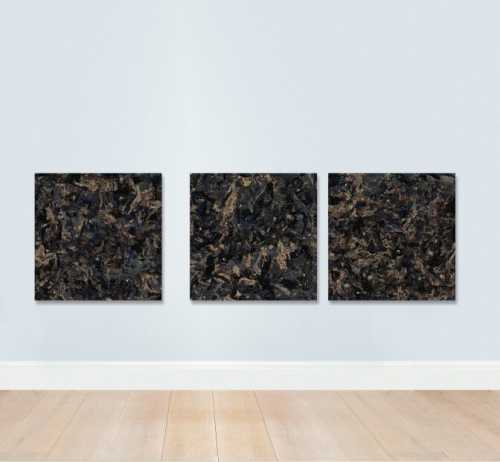
i. No Man's Land I ii. No Man's Land II iii. No Man's Land III
